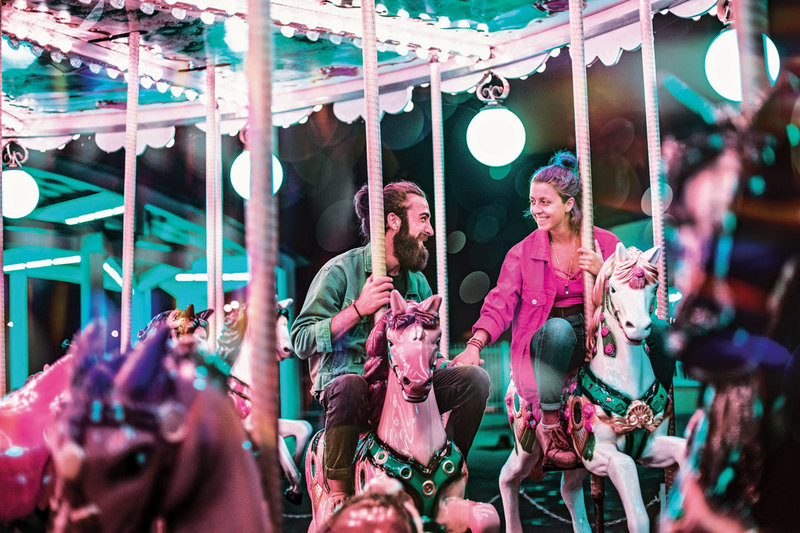
Blood rushes to your head as your heartbeat rises and your palms begin to sweat. A surge of hormones drives you euphoric; temporarily insane. Before you know it, you lost the ability to think clearly. What’s scary is, to some extent, we’ve all been there.
I love love. Probably the most dangerous affliction than any illness or condition known to man, love is known to turn lives upside down. It has more than played its part in the shaping of history. Even the good book mentions that love never fails. A Psychology Professor at the University of California explained that, more than wealth or success, relationship quality is the biggest predictor of human happiness. Further, the professor said that love is also a huge predictor of health—how long we live is predicted more strongly by our relationship quality than by, say, smoking or obesity.
With such strong impact in our lives, love has been the subject of scientific research for years, and while largely still a mystery, many things about love can now be explained.

The Chemistry is Real
A study by the BBC talks about how the three stages of falling in love—lust, attraction, attachment—induce biological reactions by releasing a number of hormones at just the right time.
In the first stage, Lust, visuals prevail. This is when a person struck you as physically attractive. Lust is driven by the sex hormones testosterone and oestrogen. Contrary to urban perception, testosterone is not confined only to men. It has also been shown to play a major role in the sex drive of women. When delivered with enough dosage, these hormones can affect you enough to ‘get you out looking for anything’.
The Attraction stage is where people fall in love and can think of nothing else. They might even lose appetite and need less sleep, preferring to spend hours at a time daydreaming about their new love. Three hormones sees much release at this point: Dopamine, a neurotransmitter known to induce pleasure and motivation, also activated by cocaine and nicotine; Norepinephrine, a form of adrenaline, starts us sweating and gets the heart racing; and Serotonin, the strongest contributor to feelings of wellbeing and happiness.
These hormones are released most intensely during the attraction stage, making it the most impactful stage in a relationship. Even looking at a photo of someone you’re in love with releases the feel-good chemical, dopamine. Prolonged eye contact releases oxytocin, a hormone responsible for feelings of bonding and closeness.
Attachment represents longer lasting commitment supported by the hormones Oxytocin and Vasopressin. Released during sex and heightened by skin-to-skin contact, these two deepens feelings of attachment and makes couples feel closer to one another after the romantic activity. This also explains why physically intimate interactions like holding hands, kissing or cuddling are very pleasurable for those in love.
Brain imaging technologies have been put to use in the name of love. The University College London used functional MRI to take pictures of lovestruck participants. Whilst inside the scanner, loved-up students were shown pictures of their new flame as well as images of platonic friends. The researchers were struck by how clear cut the pattern of brain activity was when students were looking at their new love. Four areas of the brain became active, including one responsible for ‘gut’ feelings and one that is known to respond to euphoria-inducing drugs. The lights go off, however, in the prefrontal cortex, an area often overactive in depressed patients.

All Kinds of Love
We’ve barely scratched the surface of the science of love, but what does this all say? When it comes to matters of the heart, are we all at the mercy of our biological impulses? Perhaps. What I can tell you for sure is that very few people are immune to the effects of love. And we’re not just talking about conventional love between two people. This time around, as a tribute to the most potent anti-depressant, we’ve decided to explore other kinds of love.
February can be a very depressing month for singles, so but there’s one kind of love that’s important enough to celebrate, and that is self-love. Humans and animals have come a long way, and in many aspects, the love we share for our pets are not one to underestimate. It is said that love transcends race, culture, even language, and interracial love has proven to be the real thing for many. Digital love allows a bigger opportunity for anyone to find love, and success stories are no longer few and far in between. Lastly, love can take stranger forms, and we’ve put together some of the most unusual relationships for your reading pleasure.
Read other All Kinds of Love stories
As always, for the benefit of those celebrating the month of love, we’ve put together a series of attractive wedding venues and honeymoon destinations outside of Jakarta, along with other loveable features, such as the winners of our #lovefromnowjakarta competition.
Allow me to leave you with this timeless passage from the book of Corinthians:
It always protects, always trusts, always hopes, always perseveres. Love never fails.
This article is originally from paper. Read NOW!Jakarta Magazine Febuary 2020 issue “Love and Romance". Available at selected bookstores or SUBSCRIBE here.







